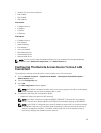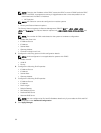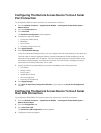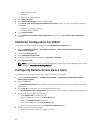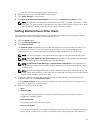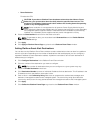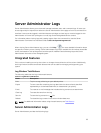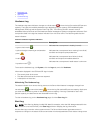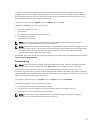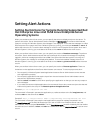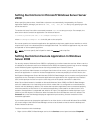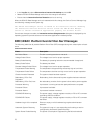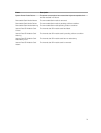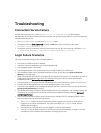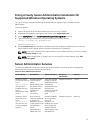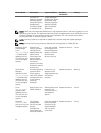
recorded in the Alert log consists of a unique identifier called the event ID for a specific event source
category and an event message that describes the event. The event ID and message uniquely describe
the severity and cause of the event and provide other relevant information such as the location of the
event and the monitored component's previous state.
To access the Alert log, click System, click the Logs tab, and click Alert.
Information displayed in the Alert log includes:
• The severity level of the event
• The event ID
• The date and time that the event was captured
• The category of the event
• A description of the event
NOTE: The log history may be required for future troubleshooting and diagnostic purposes.
Therefore, it is recommended that you save the log files.
NOTE: OMSA may send duplicate SNMP traps or log duplicate events in the Alert Log page or in the
operating system log file. The duplicate traps and events are logged either when OMSA services are
manually restarted or when the device sensor still indicates a non-normal state when OMSA
services starts after an operating system reboot.
For detailed information about alert messages, see the Server Administrator Messages Reference Guide at
dell.com/openmanagemanuals.
Command Log
NOTE: If the Command log displays invalid XML data (for example, when the XML data generated
for the selection is not well formed), click Clear Log and then redisplay the log information.
Use the Command log to monitor all of the commands issued by Server Administrator users. The
Command log tracks logins, logouts, systems management software initialization, shutdowns initiated by
systems management software, and records the last time the log was cleared. The size of the command
log file can be specified as per your requirement.
To access the Command log, click System, click the Logs tab, and click Command.
Information displayed in the Command log includes:
• The date and time that the command was invoked
• The user that is currently logged in to the Server Administrator home page or the CLI
• A description of the command and its related values
NOTE: The log history may be required for future troubleshooting and diagnostic purposes.
Therefore, it is recommended that you save the log files.
67



